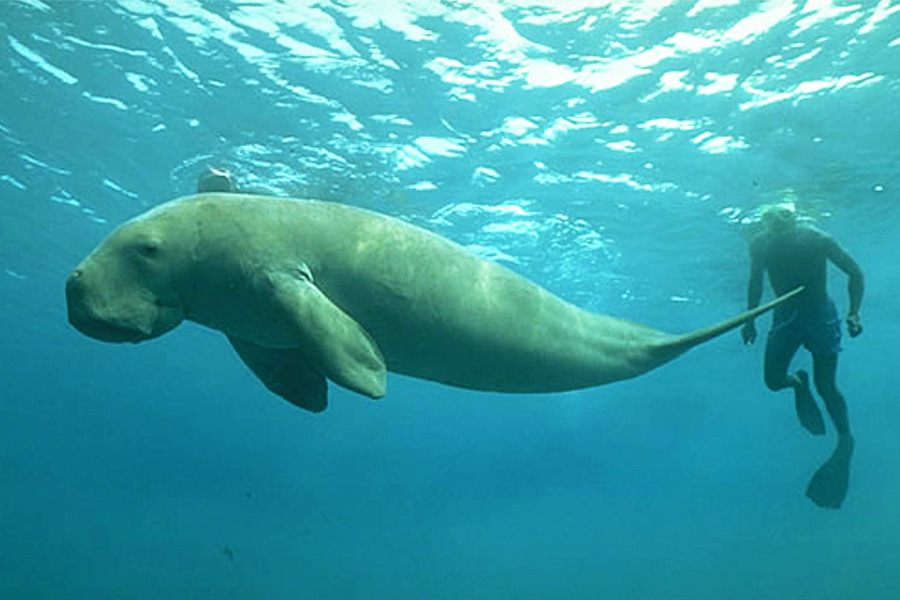Dugongs make comeback on the Great Barrier Reef

New research has shown that dugong calves have made a comeback on the reef.
The population of calves was virtually wiped out after Cyclone Yasi in 2011, which damaged seagrass growth, their main source of food. However, recent aerial surveys have shown that they have made a comeback and are now doing well on the reef.
Now thriving, the dugong calf population has contributed to a 10 per cent grown in current numbers, according to James Cook University, who conducted the survey. At present, it is estimated that there are about 80,000 dugongs left in Australian waters, which contributes to half of the total population worldwide.
Dugongs are mammals that are closely related to the manatee and extinct Stellar's sea cow. They are able to live up to 70 years in the wild and grow up to 10 feet long. They are known for their docile nature and are said to be the source of the lore of the mermaid and sea siren. They are the only marine mammal to feed exclusively on plants and can stay underwater for 6 minutes at a time. Females carry their young for about a year, giving birth to a single calf at the end of the gestation period, which they help get to the surface for its first breath of fresh air. They nurse for about 18 months, meaning that there is a slow growth in population due to the length of time a female goes between births. Dugongs are often hit by boats and jetskis as they are generally quite slow and do not often get out of the way. For this reason, it's really important to be vigilant in dugong populated areas. The fact that they have to surface every 6 minutes only contributes to the problem of frequent strikes. Calves are often targeted by sharks and saltwater crocodiles, which also contributes to the slow population growth.
The biggest threat to dugong populations is habitat loss due to coastal development and pollution which compromises their access to sea grass. If they do not have enough access to their food source, they will not reproduce, leading to a decline in population.
The survey was conducted as part of the Australian and Queensland government's Reef 2050 Plan and will be conducted every five years.












